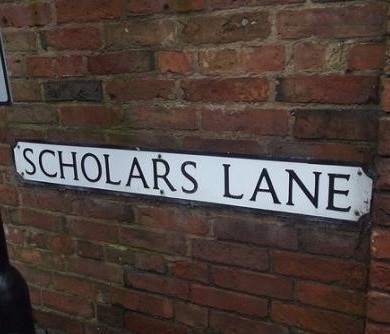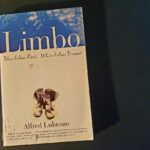It’s easy to think of journalism as a product. The news is what we read, watch, or hear. A thing. A noun. Yet the classic ethnographic texts on journalism use verbs (or at least gerunds) in their titles: Putting ‘Reality’ Together (Schlesinger 1978), Making News (Tuchman 1978), Deciding What’s News (Gans 1980).
These titles suggest activity, a process. In my small corner of the sociology of journalism – media and Muslims – you wouldn’t know it. Studies focus on content analysis, critical discourse analysis; some take interesting approaches, such as focusing on quoted sources or the tone of the headline. All are limited to what is in the text. They look at the thing.
For me, this is problematic and insufficient. I spent eight years working in public radio in Canada, and I felt that I had a privileged position. I would interview a source for ten minutes, when only a short twenty-second clip would make the news report. I would chat with a potential guest for twenty minutes or more, but the on-air current affairs interview would last only seven (that already is long in comparison to the blitzkrieg interview style of British current affairs radio…) I knew much more about the issue of the day than the listener, and even my knowledge was partial: of course, the source had more to say that I didn’t ask.
Knowing this, attentive scholars have looked not to media products but to media production. The questions change from, ‘What is in this text?’ to ‘How did it come about?’ Research examines the conditions of production. Some scholars drill further down, inquiring into the relations journalists establish and maintain in order to make the news.
This sub-field has its roots in US sociologist Herbert Gans’s study of national news magazines. His ethnography highlights the strong orientation to sources when journalists are deciding what’s news. He restricts his fieldwork to the newsroom, but at the end of the study, he points to a new direction for the discipline:
My observations on source power suggest that the study of sources deserves far more attention from news researchers than it has so far obtained. To understand the news fully, researchers must study sources as roles and as representatives of the organized or unorganized groups for whom they act and speak, and thus also as holders of power. Above all, researchers should determine what groups create or become sources, and with what agendas; what interests they pursue in seeking access to the news and in refusing it. Parallel studies should be made of groups that cannot get into the news, and why this is so. (Gans 1980: 360, fn3)
That is a mighty research agenda, tucked away in a footnote. But scholars, starting with Philip Schlesinger in his oft-cited paper on media-centrism and source strategies (1990), grasped the baton, and journalist-source relations have become a vibrant if small sub-field of the sociology of journalism.
By bringing sociological methods to bear on the institution of journalism, and by focusing on relations between actors in the field, we are heading very neatly for the application of Pierre Bourdieu’s tools. Bourdieu has indeed enjoyed some currency in the analysis of journalism, including Rodney Benson and Erik Neveu (2005), Ida Willig (2015), and very recently David Ryfe (2017). By and large, these are structural studies, or they concern themselves with the activity of journalists in isolation – the journalistic field, as it were.
In my recent paper for Sociology (2017), I bring Bourdieu’s ideas explicitly into the realm of journalist-source relations. Gans directs us to ‘organized and unorganized groups’ as ‘holders of power’ – these are placed squarely in Bourdieu’s notions of legitimacy and authority; I describe sources as both ‘new entrants’ and, adopting language from Mark Fishman’s study (1980), ‘authorised knowers’. Gans highlights source interests in ‘seeking access to the news and in refusing it.’ Here, we can think of strategies of conservation and of subversion.
Most importantly for my research, Gans asks us to examine ‘groups that cannot get into the news’. My work has focused on Muslim communities in Britain, which suffer from a slightly altered version of this affliction: they can get into the news, but not commonly on their own terms or in ways that they would wish. This comes from a seam of scholarship tracing back to Edward Said’s Orientalism (1978). Muslims are written about and known by Western powers as static, inferior, and exotic. In its current incarnation, the narratives we see in the news focus on terrorists, extremists, or simply Others whose religion makes them incommensurate with British values.
Yet my study showed that the story is not as simple as that. Although Muslims have reduced purchase on the levers of media power, and although they are often ascribed particular roles as described above, in Scotland, where I did my fieldwork, a range of roles were on offer. Muslims could inhabit the role of authorised knower – sometimes while consistently taking a subversive, oppositional stance within the field of power relations. Other Muslims, whilst taking an acceptable, conservationist line, may nonetheless be frozen out of coverage that they feel is their due as actors in Glasgow’s social ecosystem.
The dynamics are manifold and worth exploring in a language recognisable to other social scientists. Bourdieu’s tools help reveal developments and relations inside this setting, and they also provide a way to make them comparable to other fields. My hope is to nudge journalist-source relations closer to sociology, opening the sub-field to the rigour and energy of the wider discipline. Media processes are weaving themselves more tightly into the social fabric, and they demand our attention.
References
Benson, R., & Neveu, E. (Eds.) (2005). Bourdieu and the journalistic field. Cambridge: Polity.
Fishman, M. (1980). Manufacturing the news. Austin, Tex.: University of Texas Press.
Gans, H. J. (1980). Deciding what’s news: a study of ‘CBS Evening News’, ‘NBC Nightly News’, ‘Newsweek’, and ‘Time’. New York: Vintage Books.
Munnik, M. B. (2017). A Field Theory Perspective on Journalist–Source Relations: A Study of ‘New Entrants’ and ‘Authorised Knowers’ among Scottish Muslims. Sociology, https://doi.org/10.1177/0038038517696220
Ryfe, D. M. (2017). Journalism and the Public. Cambridge: Polity.
Said, E. W. (1978). Orientalism. London: Routledge and Kegan Paul.
Schlesinger, P. (1978). Putting ‘reality’ together: BBC news. London: Constable.
Schlesinger, P. (1990). Rethinking the Sociology of Journalism: Source Strategies and the Limits of Media-Centrism. In M. Ferguson (Ed.), Public Communication: The New Imperatives: Future Directions for Media Research (pp. 61–83). London: Sage.
Tuchman, G. (1978). Making news: a study in the construction of reality. New York: Free Press.
Willig, I. (2013). Newsroom ethnography in a field perspective. Journalism, 14(3), 372–387.










